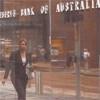
refid:10920502 ilişkili resim dosyası
Australia’s central bank cut its benchmark interest rate to the lowest level in 45 years and the government announced it will spend a further A$42 billion ($27 billion) to ward off a recession.
Governor Glenn Stevens lowered the overnight cash rate target to 3.25 percent in Sydney yesterday, saving borrowers with an average A$250,000 home loan more than A$120 a month. Treasurer Wayne Swan said the government will spend A$12.7 billion in handouts to families and A$28.8 billion on infrastructure, sending the budget into its first deficit since 2001-2002.
Turmoil on financial markets, the global recession and declining commodity prices "has had a significant dampening effect on confidence," Stevens said. Incitec Pivot, Australia’s biggest fertilizer maker, and Alumina yesterday cut profit forecasts citing lower prices and weaker demand.
"If the Australian economy still goes into recession with all that stimulus, I don’t know what else policy can do," said Adam Carr, a senior economist at ICAP Australia in Sydney.
Mortgage interest rates
Westpac Banking Corp. yesterday cut the interest rate for its standard variable-rate mortgages by 1 percent to 5.91 percent.
"The combination of expansionary monetary and fiscal policies now in place will help to cushion the Australian economy from the contractionary forces coming from abroad,"
Stevens said, adding that policy makers took yesterday’s government spending boost into account.
The economy would have contracted in fiscal 2010 without yesterday’s stimulus, the government said. Swan estimates the extra spending will create 90,000 jobs over two years and help the economy grow 1 percent in the 12 months through June 2009 and 0.75 percent the following year.
The spending will account for 2 percent of gross domestic product this year and 1.3 percent next year.
China’s 10 trillion yuan ($1.46 trillion) package, announced in November, was equivalent to almost one-fifth of the economy in 2008 and Japan’s 10 trillion yen ($111 billion) economic package is 2.5 percent of the economy. The U.S. House of Representatives on Jan. 28 passed a $819 billion stimulus plan, equivalent to 6 percent of the economy.
"The weight of the global recession is now bearing down on the Australian economy," Swan said. "It would be irresponsible not to act swiftly."
The trade surplus shrank in December by almost half to A$589 million as exports of coal and metals tumbled 11 percent, a report showed earlier yesterday.
Australia’s economy may already have followed the U.S., Britain, Japan and Europe into its first recession since 1991 after gross domestic product rose just 0.1 percent in the third quarter, the weakest pace in eight years.
Bleak estimates
GDP in Australia will probably shrink 0.2 percent this year, according to the International Monetary Fund, which last week revised its previous prediction of a 1.8 percent expansion. The IMF said global growth in 2009 will be the weakest in 60 years.
Miners BHP Billiton and Rio Tinto Group, retailer Harvey Norman Holdings and banks such as Australia & New Zealand Banking Group are among companies firing workers as profits decline.
Reports published this year show the jobless rate rose to a two-year high of 4.5 percent in December as companies cit 43,900 full-time jobs, bank lending unexpectedly fell for the first time since 1992, manufacturing shrank in January for an eighth month and house prices dropped for a third straight quarter.
Alumina, partner in the world’s biggest producer of the material used to make aluminum, said yesterday it had an 18 percent decline in second-half profit because of lower prices and higher costs.
Lowest level since 1964
To offset stalling growth, Stevens and his board lowered borrowing costs in the last four months of 2008 by three percentage points. Yesterday’s one-percentage-point reduction cuts the benchmark rate to the lowest level since February 1964.
Still, the nation’s benchmark rate remains among the highest in the developed world, dwarfing the U.S. Federal Reserve’s rate of as low as zero and higher than the European Central Bank’s 2 percent setting.
New Zealand Reserve Bank Governor Alan Bollard cut his benchmark last week to a record-low 3.5 percent and said he has scope for further reductions.The Bank of England cut its benchmark last month to 1.5 percent, the lowest since the central bank was founded in 1694. The Bank of Japan has reduced its key lending rate close to zero.